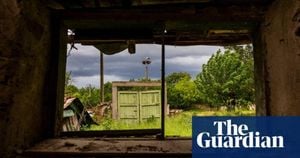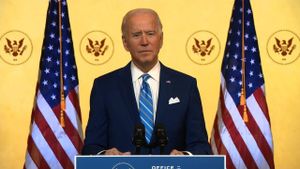On November 28, 2024, the Supreme Court of India declared its intent to maintain strict ant-pollution measures under Stage 4 of the Graded Response Action Plan (GRAP) until December 2, 2024. This decision was made amid persistent air quality issues plaguing Delhi and the surrounding National Capital Region (NCR). With the air quality index (AQI) frequently reaching alarming levels, the Supreme Court's ruling aims to reinforce efforts to combat pollution, particularly emphasizing the enforcement regulations for heavy vehicles and stubble burning.
The justices overseeing the matter, Abhay S. Oka and Augustine George Masih, criticized government authorities for their inadequate enforcement of GRAP IV restrictions, especially concerning the movement of trucks. "There is complete failure. Police was nowhere in the picture. The trucks were allowed to enter the territory and no way to go back," remarked Justice Oka, highlighting the lack of oversight and policing evident during the review session. The push for strict compliance reflects the urgency of addressing the environmental crisis affecting public health.
GRAP was instituted as part of India’s broader strategy to mitigate air pollution and offers varying stages of action depending on AQI levels. Stage 4 includes stringent measures meant to substantially decrease pollution, including the ban of heavy trucks from entering Delhi and the implementation of strict limits on construction activities. Although the current restrictions have been temporarily adjusted to allow for hybrid classes for students, all other GRAP IV measures, except those concerning schools, will be upheld.
The court expressed concern over reports indicating irresponsible practices surrounding stubble burning, particularly citing findings from Punjab. Reports suggested officials advising farmers to burn stubble after 4 PM to escape detection by authorities. This practice, if valid, poses grave risks to air quality and contradicts the measures taken to improve the environmental situation. Justice Oka stated, "If correct it is a violation. State authorities cannot advise such actions, and the Government of Punjab must take immediate steps to prevent this from continuing."
During the session, the court also addressed the seeming ambiguity of notifications from the Commission for Air Quality Management (CAQM), which permitted activities usually restricted under GRAP III. The judges interrogated the rationale behind allowing certain operations when GRAP IV was officially active. Aishwarya Bhati, Additional Solicitor General, explained the necessity for neighboring states to collaborate on these efforts and stated intentions to withdraw the ambiguous notification.
Also significant to this discussion are the broader questions surrounding cross-border pollution impacts within the Capital Region. Air quality often deteriorates due to various sources, including vehicular emissions, industrial activity, and seasonal agricultural practices, such as stubble burning. The Supreme Court has tasked the CAQM with gathering real-time data on stubble burning incidents and with actively managing and monitoring airborne particulates to facilitate timely interventions. Justice Oka stated, "We must have machinery which can send us 24x7 data of stubble burning. That is the root problem you see for this situation, and patterns have shown states are slow to act against farmers who engage in this practice."
The court's oversight extends beyond merely assessing the current measures; it has actively appointed advocate commissioners to examine enforcement conditions and determine compliance within the National Capital Region. The proceedings are set to intensify leading up to the next hearing on December 2, where authorities will provide evidence of progress and planned measures to control pollution effectively.
The continuing struggle against air pollution not only raises concerns about environmental safety but also highlights the overarching need for accountable governance and community sensitivity to ecological concerns. With air quality consistently labeled as “very poor” or worse, immediate and intensive action is required if agencies are to restore health and safety to the populations living within one of the most polluted regions of the world. The potential for legal ramifications against officials for orchestrated neglect indicates the judiciary's readiness to hold responsible those who fail to comply with established environmental protocols.
The Supreme Court's dialogue with responsible authorities signals the decisive role of judiciary intervention when governmental oversight falters. It advocates for transparency and consistent reporting as integral to instigated policies aimed at safeguarding air quality. Efforts to monitor conditions and mobilize governmental action against violative practices may lay groundwork for more stringent future regulations, as air quality remains at the forefront of national attention.
By persistently reviewing actionable insight and requiring state accountability, the Supreme Court is addressing the systemic failures fueling this public health emergency. Addressing air pollution requires not only immediate remedial strategies but also sustained commitment from all stakeholders to alleviate the long-standing burden of deteriorated air quality on citizens. The focus remains on ensuring the implementation of efficacious measures to engender long-term improvements for the region's air quality.



